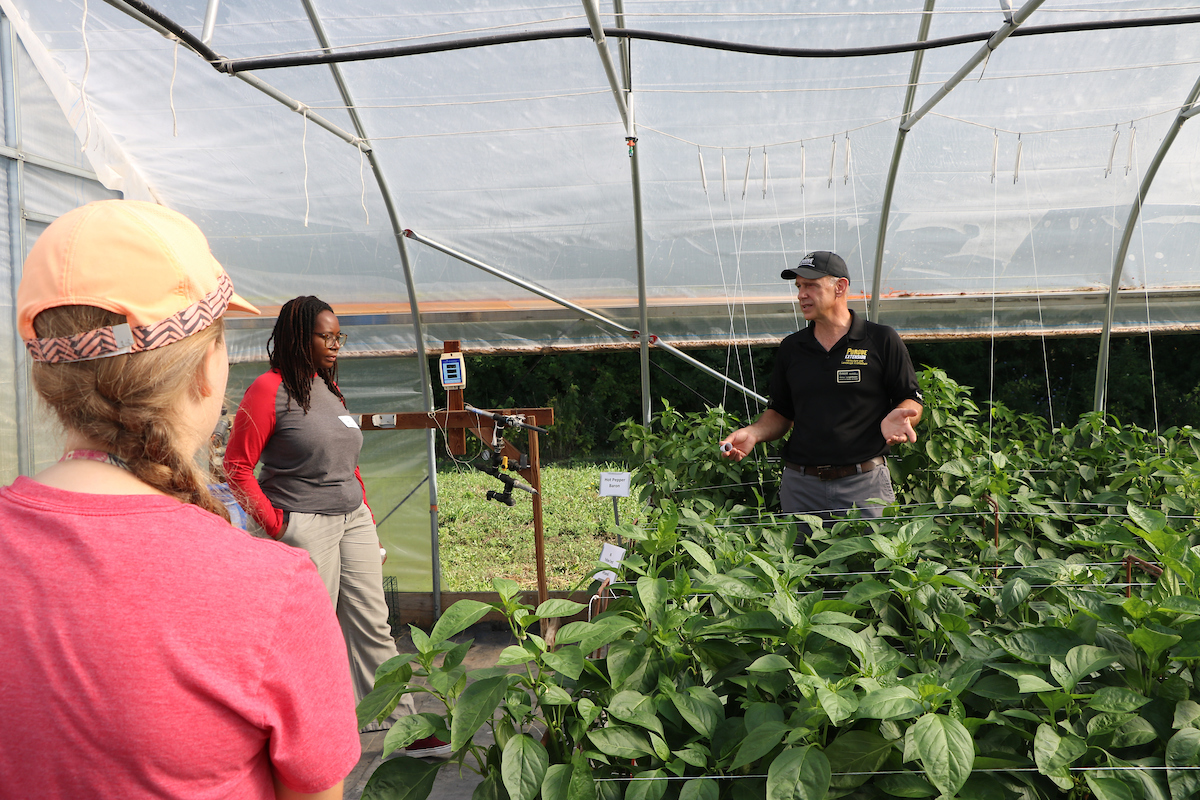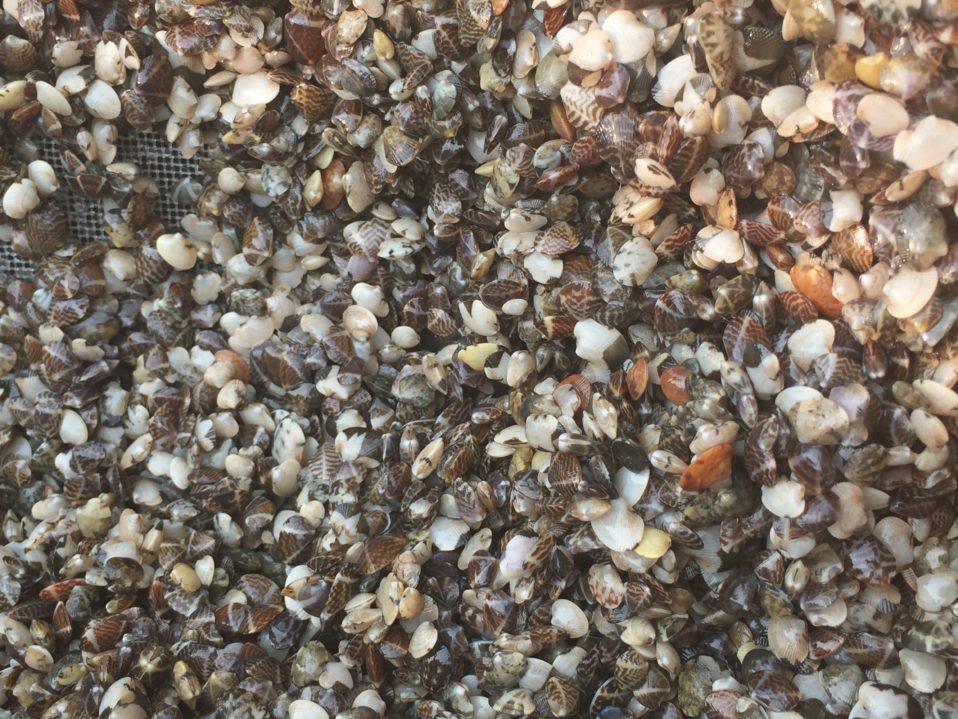
Farming in Carroll County Drives Economic Growth

The latest numbers released by the U.S. Department of Agriculture reveal that farming in Carroll County is a significant contributor to the local economy. From 2017 to 2022, the total market value of agricultural products sold in Carroll County increased by 25.39%, reaching over $138 million.
Sustainable Development Goals (SDGs)
The Sustainable Development Goals (SDGs) set by the United Nations aim to address global challenges and promote sustainable development. The agricultural sector plays a crucial role in achieving these goals, and Carroll County’s farming industry aligns with several SDGs, including:
- SDG 1: No Poverty
- SDG 2: Zero Hunger
- SDG 8: Decent Work and Economic Growth
- SDG 12: Responsible Consumption and Production
- SDG 15: Life on Land
District 2 Commissioner Ken Kiler emphasized the importance of agriculture in Carroll County, stating, “It is an economic driver as well as an essential part of the county’s heritage, tourism, and scenic landscape.”
The USDA’s National Agricultural Statistics Service recently released the results of the 2022 Census of Agriculture, highlighting the significance of agriculture in Carroll County’s economy. The data provides insights into demographics, economics, land use, and activities on farms and ranches across the country.
Farming Statistics in Carroll County (2017-2022)
- The number of farms in the county increased from 1,174 to 1,180.
- The number of organic operations in the county increased by 175%, from four to 11.
- The total market value from the sale of crops, grain, fruit, berry trees, and nuts grew by 18%.
- The total number of acres farmed decreased from 146,000 acres to 130,000 acres, a decline of 11.3%. This indicates a general trend towards less farmland, but an increase in the value of agricultural products.
Denise Beaver, director of the county’s Economic Development, highlighted the importance of agriculture for the local economy and food supply. She mentioned that the Carroll County Farmers’ Markets will soon open, providing residents with opportunities to support local products throughout the county.
SDGs, Targets, and Indicators in the Article
SDGs Addressed or Connected to the Issues Highlighted in the Article:
- Sustainable Development Goal 1: No Poverty
- Sustainable Development Goal 2: Zero Hunger
- Sustainable Development Goal 8: Decent Work and Economic Growth
- Sustainable Development Goal 12: Responsible Consumption and Production
- Sustainable Development Goal 15: Life on Land
Specific Targets Under Those SDGs Based on the Article’s Content:
- Target 1.4: By 2030, ensure that all men and women, in particular the poor and the vulnerable, have equal rights to economic resources, as well as access to basic services, ownership, and control over land and other forms of property.
- Target 2.3: By 2030, double the agricultural productivity and incomes of small-scale food producers, in particular women, indigenous peoples, family farmers, pastoralists, and fishers, including through secure and equal access to land, other productive resources, and inputs, knowledge, financial services, markets, and opportunities for value addition and non-farm employment.
- Target 8.3: Promote development-oriented policies that support productive activities, decent job creation, entrepreneurship, creativity, and innovation, and encourage the formalization and growth of micro-, small-, and medium-sized enterprises, including through access to financial services.
- Target 12.2: By 2030, achieve the sustainable management and efficient use of natural resources.
- Target 15.1: By 2020, ensure the conservation, restoration, and sustainable use of terrestrial and inland freshwater ecosystems and their services, in particular forests, wetlands, mountains, and drylands, in line with obligations under international agreements.
Indicators Mentioned or Implied in the Article:
- Indicator 1.4.2: Proportion of total adult population with secure tenure rights to land, with legally recognized documentation and who perceive their rights to land as secure, by sex and by type of tenure.
- Indicator 2.3.1: Volume of production per labor unit by classes of farming/pastoral/forestry enterprise size.
- Indicator 8.3.1: Proportion of informal employment in non-agriculture employment, by sex.
- Indicator 12.2.1: Material footprint, material footprint per capita, and material footprint per GDP.
- Indicator 15.1.1: Forest area as a proportion of total land area.
Table: SDGs, Targets, and Indicators
| SDGs | Targets | Indicators |
|---|---|---|
| Sustainable Development Goal 1: No Poverty | Target 1.4: By 2030, ensure that all men and women, in particular the poor and the vulnerable, have equal rights to economic resources, as well as access to basic services, ownership, and control over land and other forms of property. | Indicator 1.4.2: Proportion of total adult population with secure tenure rights to land, with legally recognized documentation and who perceive their rights to land as secure, by sex and by type of tenure. |
| Sustainable Development Goal 2: Zero Hunger | Target 2.3: By 2030, double the agricultural productivity and incomes of small-scale food producers, in particular women, indigenous peoples, family farmers, pastoralists, and fishers, including through secure and equal access to land, other productive resources, and inputs, knowledge, financial services, markets, and opportunities for value addition and non-farm employment. | Indicator 2.3.1: Volume of production per labor unit by classes of farming/pastoral/forestry enterprise size. |
| Sustainable Development Goal 8: Decent Work and Economic Growth | Target 8.3: Promote development-oriented policies that support productive activities, decent job creation, entrepreneurship, creativity, and innovation, and encourage the formalization and growth of micro-, small-, and medium-sized enterprises, including through access to financial services. | Indicator 8.3.1: Proportion of informal employment in non-agriculture employment, by sex. |
| Sustainable Development Goal 12: Responsible Consumption and Production | Target 12.2: By 2030, achieve the sustainable management and efficient use of natural resources. | Indicator 12.2.1: Material footprint, material footprint per capita, and material footprint per GDP. |
| Sustainable Development Goal 15: Life on Land | Target 15.1: By 2020, ensure the conservation, restoration, and sustainable use of terrestrial and inland freshwater ecosystems and their services, in particular forests, wetlands, mountains, and drylands, in line with obligations under international agreements. | Indicator 15.1.1: Forest area as a proportion of total land area. |
Behold! This splendid article springs forth from the wellspring of knowledge, shaped by a wondrous proprietary AI technology that delved into a vast ocean of data, illuminating the path towards the Sustainable Development Goals. Remember that all rights are reserved by SDG Investors LLC, empowering us to champion progress together.
Source: baltimoresun.com

Join us, as fellow seekers of change, on a transformative journey at https://sdgtalks.ai/welcome, where you can become a member and actively contribute to shaping a brighter future.






